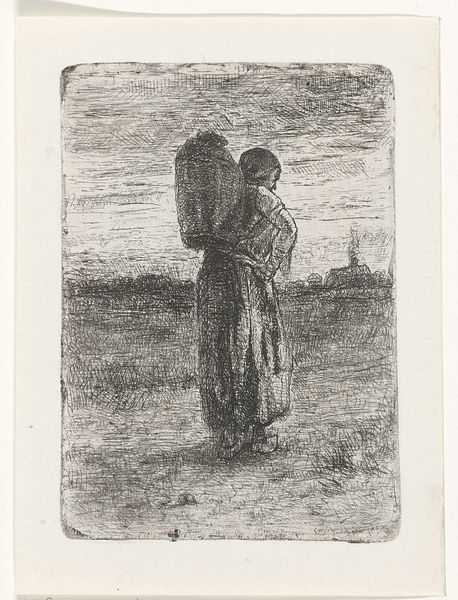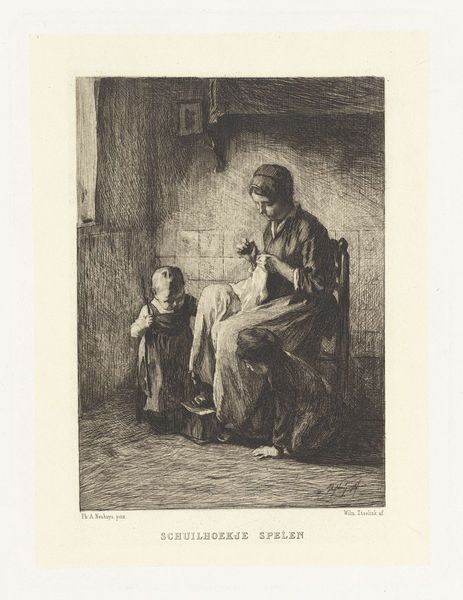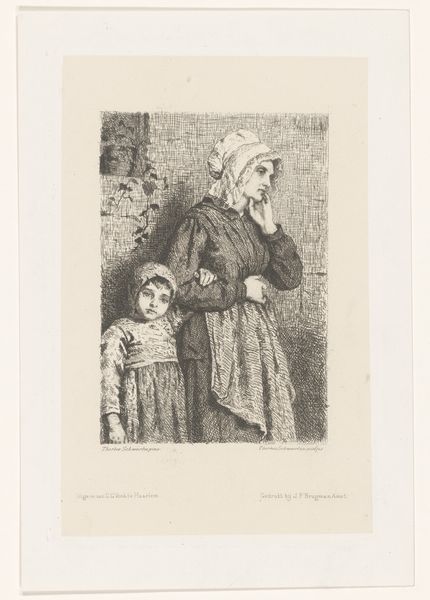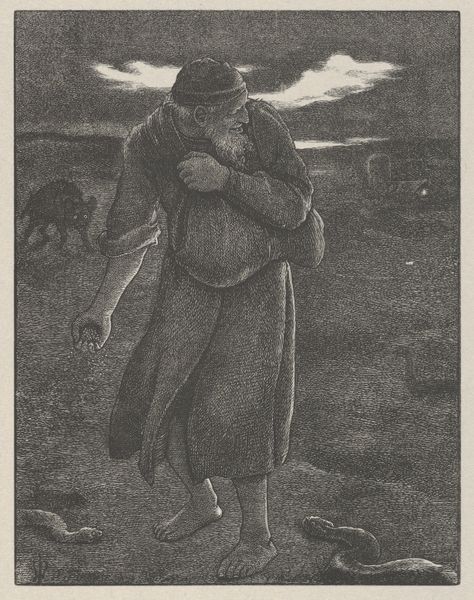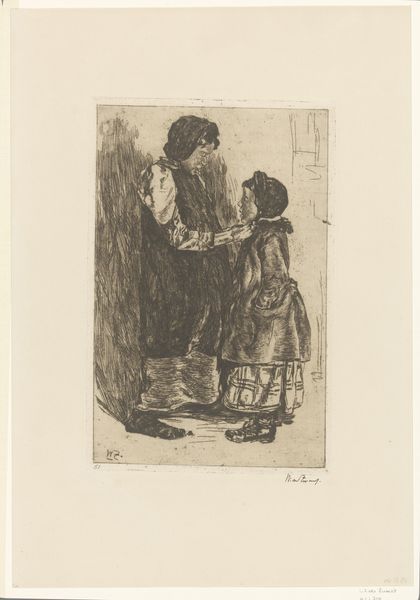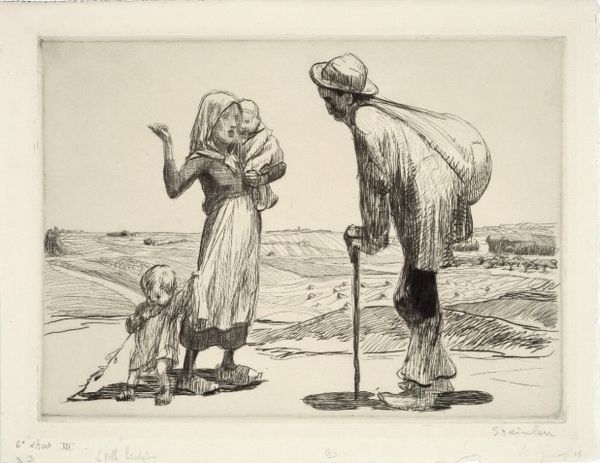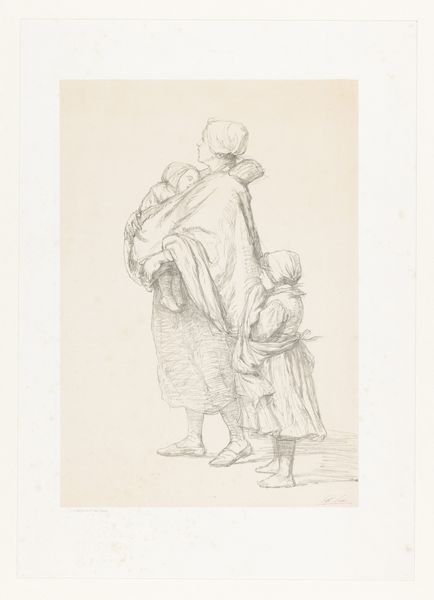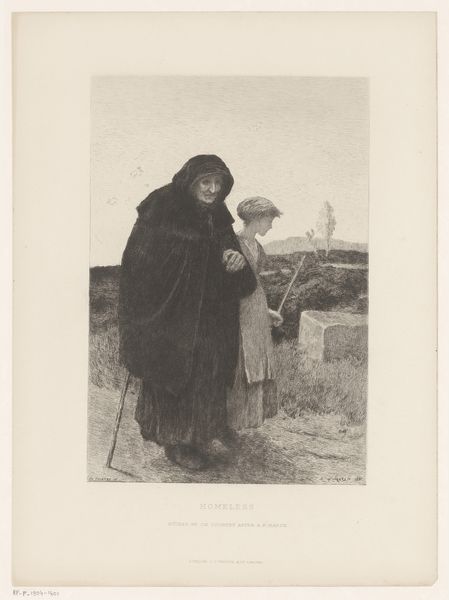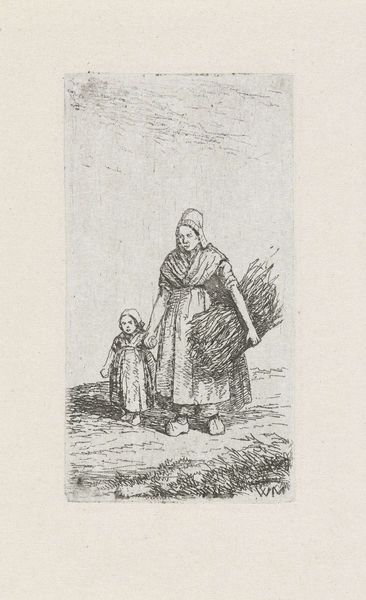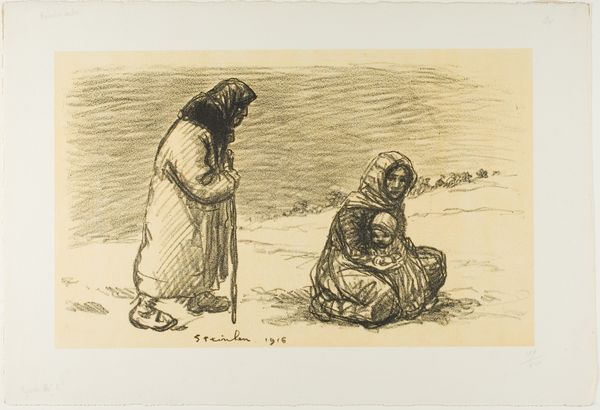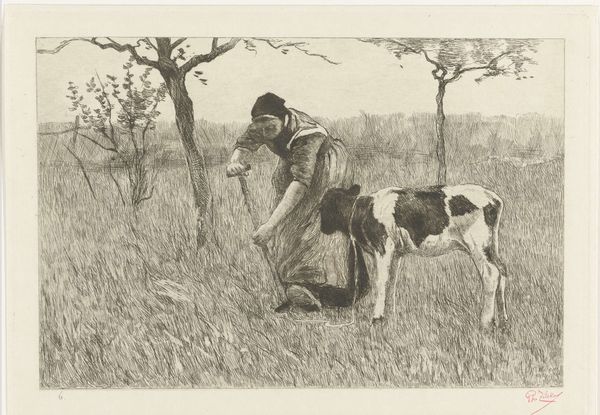
drawing, print, etching
#
drawing
# print
#
etching
#
landscape
#
figuration
#
genre-painting
#
northern-renaissance
#
realism
Dimensions: height 225 mm, width 173 mm
Copyright: Rijks Museum: Open Domain
Curator: This print by Willem Steelink II, titled "Mother with Two Children Returning from the Beach," likely created between 1866 and 1928, offers a compelling look at motherhood in the Netherlands during that time. Editor: It's a striking piece, isn’t it? The somber tones and the slightly blurred etching technique give it an almost melancholic atmosphere, a quiet sort of intensity. Curator: Indeed. I see it as a representation of the intersection of gender, labor, and social class. The mother's weary expression and posture, weighed down by the infant, speaks volumes about the burdens placed upon women, especially working-class women, during this period. The return from the beach isn't just a stroll; it's likely tied to work, perhaps seaweed gathering. Editor: I’m drawn to the textures Steelink achieves. Look at the dress—it’s not just a dark mass; it has weight and texture that ground the figures. It is a successful way to transmit a sensation of materiality with so little resources. The hatching and cross-hatching create form and depth. And how the figures occupy space, moving forward toward the viewer... Curator: Absolutely, and that use of light and shadow serves to further highlight the social realities of the time. It also reminds us of the social dynamics often at play when documenting rural life and work at that time, not free of an orientalist vision. Editor: In terms of form, it follows many rules, though, don’t you think? This northern renaissance mixed with a hint of realism is the right technique to portrait that sense of hard labor in daily life. I agree that the artist's social position as someone who is merely documenting what surrounds him may be debatable but still very representative of the time. Curator: Perhaps the tension comes precisely from that positioning. Steelink wasn’t an insider and that inevitably shaped his view of his subject matter. However, analyzing artwork in its sociohistorical context is so rewarding, as the final meaning of the artwork expands greatly beyond its immediate and purely formal value. Editor: In a way, this small image manages to speak to both the social condition of the working class, but doing so with masterful management of form, light and shadow. Curator: I appreciate that interplay—a convergence of technique and context that brings to the surface important considerations regarding class and the portrayal of labor in art. Editor: And for me, those very visual and compositional solutions are what make it speak so powerfully to modern audiences.
Comments
No comments
Be the first to comment and join the conversation on the ultimate creative platform.
